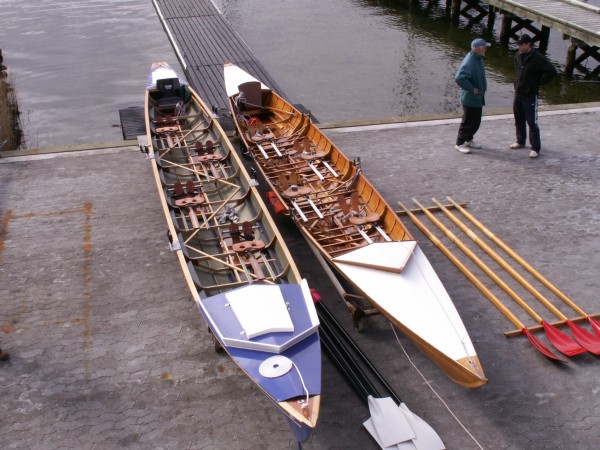We posted this post in 2021. In the meantime, some new versions of carbon boats are newly available on the market. And many manufacturers have worked on the subject of the weight difference of the boats. The weight of Coastal Boats is always an issue. And we have suspected it for a long time, and it is also discussed in professional circles. Boat manufacturers promise a boat weight and then deliver boats almost 20% heavier than the recommended FISA weight.
The weight of Coastal Boats – When is heavy too heavy? According to FISA, they should be lighter. For the Coastal 4X, they have lowered the weight from 140kg to 130kg. FISA wants to reduce the weight, while the boat manufacturers fear that the prices will increase even more with decreasing weight.
We put the Coastal World Championship to the test. In Portugal. On solos and twos. We watched the boats being weighed, looked at about 15 boats, and inspected the factory signs. The result was not really satisfactory.

There is a considerable variance. One has the impression that all boat manufacturers – with a few exceptions – can reach the minimum weight of 35 kg (solo) and 60 kg (double). Yes, most build to reach FISA guidelines but they are still able to achieve much lower weights. RUBENETTI, Leo, Lite, and others come close to 26 kg for solo and 53 kg for double, depending on the model. Considerably lower. The weight we observed in Portugal nevertheless fluctuated significantly.
Overall, we could see that the weights of the boats of individual manufacturers fluctuate. We have also seen that the weights of coastal boats can vary greatly even within one manufacturer, not only with manufacturers from the Far East. We are not talking about a kilo deviation from the FISA standard. When ordering a boat, make sure that you specify a minimum weight. Not everywhere where it says 35 kg you will get 35 kg. We saw weight variations of the manufacturers between 28 kg and 39 kg with a Solo and 70-53 kg with a Double. That’s a lot – way too much.
Weight is becoming more and more of an issue. Lighter boats lie less deep in the water, are easier to bring into the water, and are – if made of carbon – also more torsionally stiff (more information). No wonder more and more manufacturers are now offering carbon boats in addition to the standard GRP boats. Although the prices are significantly higher, the weight is lower. Read on: Is a carbon boat faster?
The weight of Coastal Boats? The problem: Stiffness
Light is not always better: we know that the stiffness of the boats is an essential fundamental element. If the boats are too soft, twisting will occur. Especially light Coastal boats are only recommended if they are reinforced with frames/ribs. Fortunately, this is standard today.
By the way: A boat experiences the strongest loads not only in the water but also on the trailer in road traffic! This should also be considered when choosing the weight of the material and, of course, the right trailer if you are planning to buy a boat. Some manufacturers have caught up on that.
Ribs/frames as torsion inhibitors
The advantage of heavy GRP boats, as they were seen again and again in Portugal, is the lateral stability and stiffness of the shells. And the easy way to repair the boat. Just to understand, fiberglass are great reinforcing fibers with significant effect. Unfortunately, their density and resin absorption is relatively high. This adds stiffness but also weight.

The weight of Coastal Boats – When are they too heavy, and how do the boat manufacturers who work with higher quality materials (carbon fiber, Nomex fabrics, etc.) and not with fiberglass help themselves? They use constructive aids. Nothing new in boat building. Here is a Wikipedia picture showing a boat with a skeleton (frames).

The coastal boat manufacturers who produce light boats between 26 kg and 30 kg work with ribs (eng. rips). This is a way to bring the boat’s stiffness to the level of a GRP boat. The elements between the ribs are possibly slightly softer, but the overall longitudinal stiffness is the same with less weight. Even the heavy boats have ribs or additional diagonal braces — 4x, of course, more than the 2x.
Most manufacturers of kevlar or carbon boats use 3-6 reps in the solo and 6-8 reps in the double. That’s enough and does not affect durability or speed. That comes from the design. Light or heavy: I know from experience: that light is just as stiff as heavy. And personally, I’d rather have a 28kg rocket under my butt than a 35kg cruiser. Above all, I would be annoyed if I bought a boat according to FISA measurements and realized at the first rowing that the weight was 10% higher than expected.
What experiences have you had? Have you ever been shocked by how much heavier your boat was? Comment below this article!







